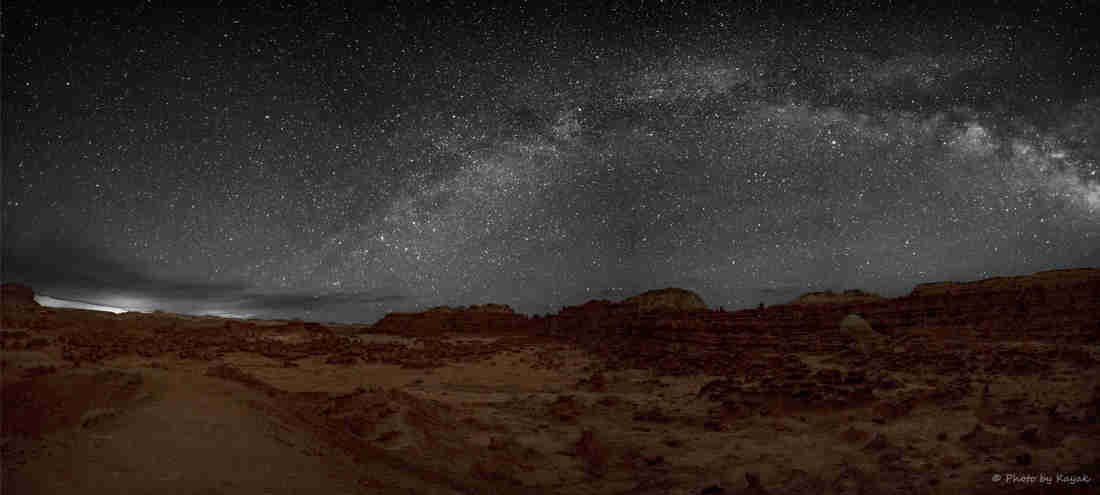|
It's that time of year again. Prime season in the northern hemisphere for photographing the Milky Way in the night sky.
Beginning in late May and into August or September, the rotation of the earth makes the galactic core of the Milky Way visible north of the equator. In April, when this image was taken, the Milky Way arrives late into the night with only part of the core showing. This shot was taken just as dawn's glow was beginning to peek above the Eastern horizon. Later in the summer the Milky Way will rise earlier and stand more perpendicular in the sky. For now, though, it rises in an arch low in the sky before disappearing below the horizon. We were out all night last April to take this and several images, including one of the zodiacal light just after sunset. This image is a composite of 12 portrait style images stitched together to make one panorama. It's also edited to enhance the sky and the foreground. The camera sees more that the human eye in this low-light situation. The actual experience of standing in rural Utah away from all artificial light to watch and photograph the Milky Way cannot be easily described. While the photos are great and evocative of the experience, being out in the quiet (and cold this time) with thousands of visible stars above is an invigorating and humbling experience. This is the sky that we can no longer see from our aggressively lit cities and towns. This is the sky that until less than a lifetime ago, greeted people when they looked toward the sky. It is the sky of constellations that peoples around our planet believed housed their gods. It is the sky that inspired poets and provided clues for navigating our oceans. Today, we are lucky to see 150 stars in a typical urban or suburban area. To see it you have to travel to where human light pollution is less prevalent, which in this country means mostly out West but also in some more remote areas east of the Mississippi. If you do it once, you will probably want to do it again. It's invigorating and a bit disorienting at the same time to be out in the dark away from your comfort zone. You can easily get lost if you are not careful. And, working in the dark is different from working with adequate light. But, one thing for certain you will share an experience that came easily to your grandparents and great grandparents. And, you will be reminded of the vastness of the universe and our small place in it. By the way, when I mentioned editing the image did you notice that the sky is black and white while the foreground is in color. I admit to taking some license here but found making this change helps recreate some of the mood from the experience. Let me know if you like it. Images and text copyright Clinton Richardson. More night sky images at our TrekPic.com web site in the Night Lights Gallery. If you like these posts, please tell your friends about the Venture Moola blog at Readjanus.com. And, feel free to share this blog. The more readers the better. Click here to subscribe to a weekly email that tells you when we issue new entries. Or, click in the column to the left to follow us on Facebook or Twitter. The venture moola blog comes to you from Atlanta, Georgia. Find it at readjanus.com. Copyright Clinton Richardson.
Comments are closed.
|
the blog
Travel, history, and business with original photos.
your hostClinton Richardson - author, photographer, business advisor, traveler. Categories
All
Archives
July 2023
Follow us on Facebook
|
Check out Ancient Selfies a 2017 International Book Awards Finalist in History and 2018 eLit Awards Gold Medal Winner and
Passports in his Underpants - A Planet Friendly Photo Safari a 2020 Readers' Favorite Winner in Nonfiction
Site Copyright 2024 by Clinton Richardson

 RSS Feed
RSS Feed